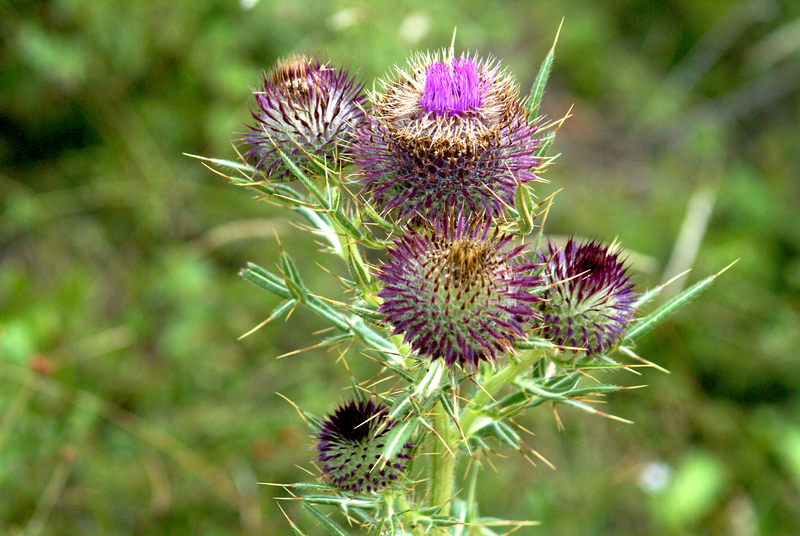Gardens: Small Plots, Big Impact on Climate
Posted on 22/06/2025
Gardens: Small Plots, Big Impact on Climate
In the face of accelerating climate change, solutions often seem out of reach for individuals. However, gardens--regardless of their size--present an accessible path toward environmental sustainability. This article explores how small-scale gardens make a significant difference for both the planet and our own lives, offering practical steps and inspiring ideas for gardeners everywhere.

Why Gardens Matter in the Climate Conversation
When considering climate action, massive forests or green energy projects typically come to mind. Still, gardens play a crucial role in ecosystem health and climate change mitigation. Let's dive into the fundamental reasons why small garden plots wield such a big impact on the climate:
- Carbon capture: All plants, even those in your backyard, absorb CO2 from the atmosphere through photosynthesis.
- Biodiversity: Gardens bolster local plant and animal species, providing critical habitats in urban environments.
- Microclimate regulation: Small gardens reduce the urban heat island effect, making local neighborhoods cooler in summer.
- Water filtration and retention: Healthy soils in gardens soak up rain, filter pollutants, and prevent flooding.
- Reduction in food miles: Growing food in your garden slashes the emissions associated with transportation and packaging.
From Window Boxes to Community Gardens: Every Plot Counts
Whether you cultivate vegetables in raised beds or flowers in window boxes, your individual gardening efforts combine with millions of others to make a measurable contribution. The cumulative effect of urban and suburban gardens across the globe adds up to an enormous green infrastructure that helps combat climate change.
How Small Gardens Influence the Climate
1. Carbon Sequestration in Small Spaces
Every growing plant is a living carbon sink. While a single geranium might not seem significant, the collective effect--across city blocks and rural communities--captures substantial amounts of carbon dioxide. Trees, shrubs, grasses, and even lawns store carbon in their tissues and in the soil.
- Trees and shrubs: These perennial plants provide the most significant carbon capture over time.
- Soil organic matter: Gardeners who compost and mulch add carbon-rich material to the soil, further increasing sequestration.
In fact, research indicates that urban gardens can store up to 50 tonnes of carbon per hectare. By maximizing plant density and maintaining healthy soils, your garden contributes directly to drawing down surplus atmospheric CO2.
2. Supporting Local Biodiversity
Climate change and habitat loss are closely linked. Every garden, regardless of scale, offers a sanctuary for insects, birds, and other wildlife facing dwindling habitats. Gardeners who plant native species, reduce pesticide use, and create diverse plantings foster resilient ecosystems.
- Pollinator-friendly plants like lavender, echinacea, and borage attract bees and butterflies.
- Leaf piles and dead wood provide shelter for invertebrates and small mammals.
- Ponds and water features become vital oases during heatwaves and droughts.
3. Reducing Heat and Improving Air Quality
Urban areas suffer from the urban heat island effect, where surfaces like concrete and asphalt absorb and re-emit heat, raising local temperatures. Gardens, even small ones, break this cycle by shading and cooling their surroundings.
- Trees and climbing vines provide shade, reducing the need for air conditioning and energy consumption.
- Plants also filter air pollutants, removing particulates and absorbing nitrogen dioxide, ozone, and sulphur dioxide.
By incorporating green spaces into dense urban fabric, gardeners help communities adapt to more extreme temperatures caused by climate change.
Climate-Smart Gardening: Practical Steps for Big Change
Optimize Your Planting Choices
Selecting the right plants is key for maximizing your garden's positive environmental impact. Focus on:
- Native species: Plants adapted to your region require less water, fertilizer, and maintenance.
- Perennials: Unlike annuals, perennials return year after year, sequestering more carbon in roots and soil.
- Edible gardens: Growing fruits, vegetables, and herbs reduces the environmental footprint of your diet.
Adopt Sustainable Soil Practices
Soil is more than just dirt; it's a living carbon bank. Sustainably managed soils:
- Lock up more carbon and emit less greenhouse gas.
- Support beneficial microbes and earthworms.
- Filter water and protect against droughts.
How can you build healthy soils?
- Add compost from kitchen scraps and garden waste instead of synthetic fertilizers.
- Practice mulching to suppress weeds, retain moisture, and feed soil organisms.
- Minimize digging, or try no-dig gardening--disturbing the soil less keeps carbon underground.
Harvest Rainwater and Save Energy
Smart water management is essential as climate patterns shift. Small gardens can make a big difference by:
- Collecting rainwater in barrels for dry spells (reducing reliance on mains supply).
- Designing with drought-tolerant plants to conserve fresh water.
- Using efficient drip irrigation systems that minimize evaporation and waste.
Compost: Transforming Waste to Climate Solution
Composting is nature's way of recycling. By turning kitchen peelings, coffee grounds, and garden trimmings into rich fertilizer, gardeners keep organic waste out of landfills--where it would otherwise generate methane, a potent greenhouse gas.
- Finished compost locks carbon into the soil, increasing fertility and resilience to climate extremes.
- Vermicomposting (composting with worms) is ideal for apartment dwellers or those with limited space.
How Urban and Community Gardens Combat Climate Change
Community Gardens: Collective Action, Large-Scale Results
While individual plots matter, community gardens multiply climate benefits by pooling resources, knowledge, and enthusiasm. They transform vacant lots into productive green space, boost urban food security, and educate new generations about sustainable gardening strategies.
- Shared compost heaps and water-saving irrigation systems
- Mass plantings of trees and pollinator strips
- Outdoor education programs to spread climate-smart habits beyond the garden fence
Gardens on Rooftops, Balconies, and Small Yards
Don't have access to ground space? No problem. Rooftop gardens and balcony planters also play a role in carbon capture and cooling. Container gardening techniques allow maximum green coverage in minimal space, bringing biodiversity and cleaner air to city dwellers.
- Use vertical gardening and trellises to maximize plant area.
- Install reflective surfaces or white paint under raised beds to optimize microclimates.
- Grow herbs, salad greens, and tomatoes in pots for instant harvests and reduced food mileage.
Gardening for the Future: Building Resilient Communities
Climate-smart gardens are not only part of the solution--they help communities withstand climate stresses. By building soil health, creating shade, and growing local food, gardens help buffer neighborhoods from the worst climate shocks.
- Edible gardens fight food insecurity as supply chains become threatened.
- Native plants stabilize slopes and reduce erosion after heavy rains.
- Shared green spaces foster community resilience in the face of natural disasters.
Inspiring Examples: Small Gardens, Big Change
From backyard food forests in Toronto to school gardens in Nairobi, examples abound of how tiny plots sow seeds for climate action. Research from the Royal Horticultural Society shows that if every UK household garden added just one tree, the effect would equal hundreds of thousands of tons of carbon captured--enough to power a major city for years.

Join the Movement: Start or Enhance Your Climate-Positive Garden
Are you ready to have your own big impact on the climate with a small plot? Here's a step-by-step action plan:
- Assess your space: Whether you have a windowsill, balcony, backyard, or share a community plot, every square meter counts.
- Choose climate-resilient, native, and edible plants: Mix trees, shrubs, perennials, and vegetables for maximum biodiversity benefits.
- Improve your soil: Start composting, use natural mulches, and disturb soil as little as possible.
- Use water wisely: Collect rainwater, group plants with similar needs, and try drip irrigation or self-watering planters.
- Share your success: Inspire friends and neighbors by sharing seeds, produce, or knowledge. Join or start a community gardening group to multiply your climate impact.
Conclusion: Growing a Greener World, One Garden at a Time
The reality of climate change can be overwhelming, but the power of gardens to shape the future should not be underestimated. By tending small plots--in backyards, balconies, rooftops, or community lots--we all can have a major impact on the climate. Gardens build healthy soils, store carbon, support biodiversity, reduce urban heat, and create climate-resilient communities.
Every plant you nurture draws down carbon.
Every flower you grow feeds a pollinator.
Every garden you create helps cool and protect our planet.
So, the next time you step into your garden--however small--remember: you are cultivating hope for a more sustainable, resilient world. Small plots, big impact--gardens do truly grow our climate solutions.
Further Resources for Climate-Friendly Gardening
- Royal Horticultural Society: Gardening for Climate Change
- NRDC: Climate-Friendly Gardening
- The Nature Conservancy: The Planetary Promise of Gardening
Start today and become part of the growing movement--because gardens of every size make a big difference for our planet's climate!



